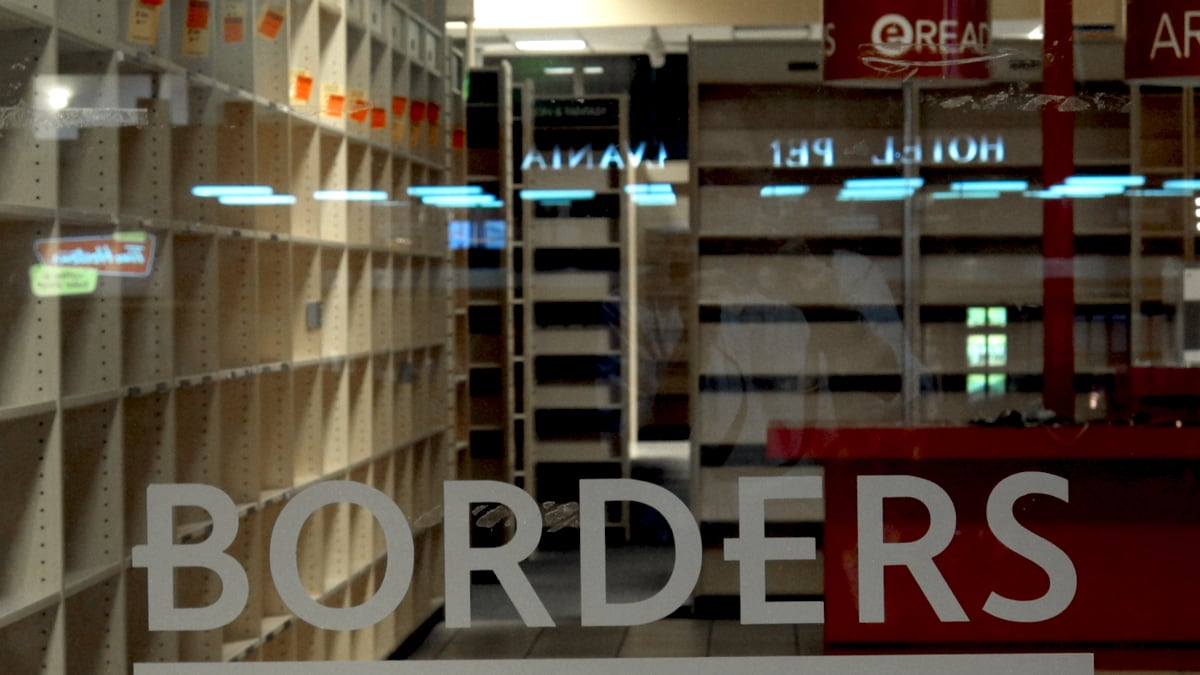I first lived in New York in 1979. Used as I was to British bookselling of that time, which was dominated by the century-old chain of WH Smith—newspaper, magazine, tobacco, and toy sellers, as much as books—the Manhattan bookstores struck me as cultural treasures. Certainly, the Barnes & Noble flagship store on Fifth Avenue was just a vast remainder outlet (as were all their stores in those days), but the Doubleday chain—yes, a chain—gave the city a quality of bookselling I thought then unmatched anywhere else in the world. The stock was eclectic and intelligent, the staff opinionated and knowledgeable, and the opening hours, reaching deep into the evening, perfect for the bustling evening life of the city.
Across Fifth Avenue from Barnes & Noble was the iconic Rizzoli store—paneled, self-confident, sophisticated, and lovely—but all too grand for me. Saturday afternoons were for the Strand, at 828 Broadway, with its marvelous, mouthwatering 18 miles of shelves, all in happy disorder. Or, best of all perhaps, Books and Co. up beside the Whitney on Madison and 74th. If there was ever one model for what became a few years later my Waterstones stores, Books and Co. was probably it: a reader’s and an author’s place; quiet, expert, modest, and friendly, wholly self-confident, demonstrably comfortable in its own skin.
The bookselling London I returned to in 1982 was just as I had left it. Depressingly so. WH Smith’s market domination was within a market showing dependable annual compound growth, leaving good scraps for the independents to share. Foyles strutted its stuff on the edges of Soho—rather like the Strand in N.Y.C., but not as good. There was the huge Dillon’s store in Bloomsbury, seemingly kept permanently closed by its trade union, and the lovely Hatchards, on prime Piccadilly, owned at that time by Collins, the publishers. One or two niche independents made their precarious livings around town, but, in truth, so few were of any quality. The exception, and 30 years later it still is, was the superb John Sandoe, housed in a tiny Regency cottage, just off Chelsea’s Kings Road, books piled high on the floor, overloaded shelves reaching right up to the ceiling. In contrast to New York however, not one of them—literally not one—was so much as open on Saturday afternoons, let alone into weekday evenings. The High Hill Bookshop, up in North London’s Hampstead, quite possibly the most literary-leaning residential district in any city in the world, used, hilariously, to turn its lights out, whatever the time of day, if there were no customers browsing in the shop.

All this and more were what gave Waterstones its opportunity: the market leader, WH Smith, had a weak, drearily philistine consumer proposition; there were independents who appeared cowered by their dominance and showed in the main little appetite for the fight; and there was a strong and annually growing U.K. book market overall. But that was not all; little understood now, but to me a matter at the time of huge significance, as we began opening stores in the ’80s and ’90s, WH Smith, and indeed anyone else, had to compete with us on a level playing field. It made a huge difference. Resale Price Maintenance (the “Net Book Agreement”) was there in place to protect us all from discounters, whether from within the trade or without. We used to open as close to a WH Smith store as we could—preferably one right beside them, and a second across the street. We would do the same to an independent too, if we thought (see Hampstead’s High Hill Bookshop, as above!) that they also were doing an inadequate job in the service of their local market. Why right beside them? Because, unable to use their greater buying power to cut prices against us, they were forced to compete with us on pure bookselling skills and range and ambience and—significantly—the quality and attitude of staff. This they were, and knew they were, demonstrably unable to do. And so—we won. We were nothing more than the most thinly capitalized startup you can imagine—but by the end of the 1980s we were represented, sometimes several times over, in all the major urban areas in the country and most of the smaller ones too. Publishers, unsurprisingly highly suspicious of our survival prospects in our early years, were now, led by Peter Mayer at Penguin, in full support. They were obliged to be. We had the best bookshops around.
The essence of it all was to be different from the incumbents. As the Financial Times said in a recent article, “Waterstones set out in 1982 to be less corporate than WH Smith, less patchy in quality from the independents, and staffed by book lovers who knew about the books they were selling. They wanted the store to be a destination in itself rather than a place where consumers only went to buy books. It worked.”
The chain was founded with my £6,000 and an unpleasant load of personal debt. In 1993 WH Smith bought us out for £47 million. I organized a buyout in 1998 and sold it on to the HMV group. Not, as it turned out, a very wise move...






